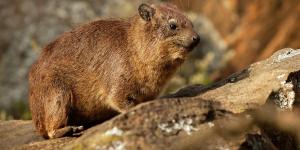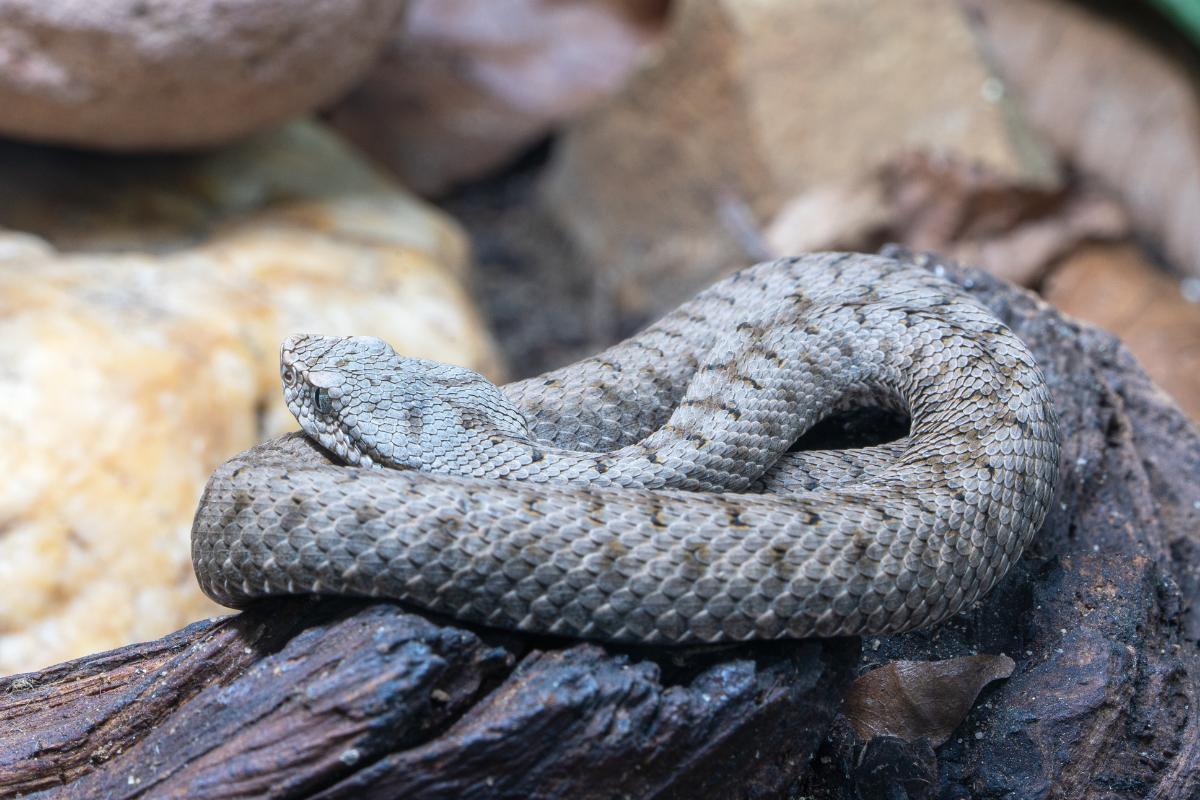Most Dangerous Animals in Spain


Spain and the rest of the Iberian Peninsula are known for their rich biodiversity. This is partly due to the climactic and geographic diversity the country enjoys. These include sunny Mediterranean coastlines, temperate riparian forests, lush mountain ecosystems and even some desert territories. Despite the diversity of the flora and fauna which inhabit the country of Spain, it is not a country which is greatly associated with terrifying or dangerous animals. This is especially if we compare it to countries such as Australia or areas such as Equatorial Africa. Despite this, it doesn't mean there are not dangers to be found.
At thedailyECO, we learn more by providing the 10 most dangerous animals in Spain. We discover which animals pose the biggest threats to human life, as well as provide facts and photos about these dangerous Spanish animals.
- Megarian banded centipede (Scolopendra cingulata)
- Asp viper (Vipera aspis)
- Common yellow scorpion (Buthus occitanus)
- Mediterranean black widow (Latrodectus tredecimguttatus)
- Asian tiger mosquito (Aedes albopictus)
- Marbled electric ray (Torpedo marmorata)
- Portuguese man o' war (Physalia physalis)
- Greater weever (Trachinus draco)
- Brown bear (Ursus arctos)
- Wild boar (Sus scrofa)
Megarian banded centipede (Scolopendra cingulata)
Also known as the Mediterranean banded centipede, the Megarian banded centipede is the most common centipedes from the order Scolopendromorpha in the Mediterranean. It usually measures around 4-6" (10-15 cm), so it is not the largest centipede. It has a venom which it uses to kill other animals, usually insects and small lizards.
Found in various Mediterranean regions, they usually hide under rocks and other areas away from sunlight. Their venom comes from modified front legs known as forcipules which release the toxins into their prey. Although a dangerous animal in Spain, their bite is not considered life-threatening. It can cause severe pain with swelling, fever and weakness. First aid is important if you receive a Megarian banded centipede bite.

Asp viper (Vipera aspis)
The asp viper is a venomous snake that lives mainly in southern Europe, especially in rocky and sunny areas. It is a relatively small snake, with an average length of between 24 to 26" (60 to 65 cm). Their skin is usually gray or brown with dark patterns, providing excellent camouflage in the dry and grassy areas of its native habitat.
The venom of the asp viper is highly toxic and its bite can be lethal, especially in children, the elderly or otherwise vulnerable persons. Symptoms of poisoning include acute pain, swelling, nausea, vomiting and, in severe cases, kidney or respiratory failure.
Learn more about this limbless reptile with our article asking do snakes have backbones?

Common yellow scorpion (Buthus occitanus)
The common yellow scorpion is the most common type of scorpion in Spain, of which there are a few. It averages a size of around 2.4-3" (6-8 cm) in length and has a segmented body with prominent pincers and a curved tail. It has brown armor on its back, but its legs and tail are a bright yellow from which their name is derived.
Although its venom is not fatal to humans, a common yellow scorpion sting can be very painful. It causes symptoms such as swelling, redness and localized pain. It can trigger more severe reactions in people with sensitivities or allergies to scorpion venom.

Mediterranean black widow (Latrodectus tredecimguttatus)
We do not necessarily associate black widow spiders with Europe, but spiders of the genus Latrodectus are found all over the world. In Europe, the Mediterranean black widow spider has a distinctive appearance with a shiny black body and a red hourglass shaped mark on the underside of its abdomen.
The black widow bite is dangerous due to its potent neurotoxic venom. Symptoms can include severe muscle pain, cramps, abdominal spasms, and in some cases, breathing difficulties. Although rarely fatal, a black widow bite requires immediate medical attention to relieve symptoms and prevent complications, making it one of the most dangerous invertebrates in Spain.
Learn more about another type of arachnid with our article on types of whip spider.

Asian tiger mosquito (Aedes albopictus)
As we can see, some of the most dangerous animals in Spain are invertebrates. While some of their danger lies in their venom, the danger of the tiger mosquito is indirect. This is because it is a vector for many diseases. Despite their lack of venom, they are a significant public health risk.
The Asian tiger mosquito is recognized for its black body with white stripes on its body and legs. More than just being a nuisance, the Sian tiger mosquito is a vector for serious diseases including dengue fever, zika virus and chikungunya. Despite its small size, the tiger mosquito is considered one of the most dangerous animals in Spain due to its ability to transmit serious diseases to humans.

Marbled electric ray (Torpedo marmorata)
The marbled electric ray is a fish that lives in the coastal waters of the Mediterranean and the Atlantic. This animal has the ability to generate electric shocks of up to 200 volts. It uses these shocks to stun its prey and defend itself from possible predators. Although encounters with humans are rare, the discharges can cause intense pain, shock and even fainting, making it one of the most dangerous animals in Spanish waters.

Portuguese man o' war (Physalia physalis)
Staying in Spanish waters, although many people think of it as a type of Mediterranean jellyfish, the Portuguese man o' war is actually a siphonophore. This is a colonial organism composed of specialized individual hydrozoa. This alien-looking creature floats on the surface of the sea with tentacles trailing below which can extend as much as 98 ft (30 m). These tentacles are covered in specialized stinging cells.
Also known as a man-of-war or bluebottle, the Portuguese man o' war has an extremely painful sting. In addition to being extremely painful, it can cause respiratory and cardiac problems. In severe cases, the sting can cause death. The danger of this animal is exacerbated by the fact it occurs when swimming, resulting in drowning in people who have been stunned.

Greater weever (Trachinus draco)
The greater weever is another marine animal which is one of the most dangerous in Spain. This fish is a benthic organism, meaning it lives in the sandy bottoms of the seas. It uses this habitat to camouflage themselves and attack prey. It also makes them difficult to detect. Their spines contain a powerful venom that can cause severe pain, swelling, fever and, in severe cases, respiratory distress. Fishermen and swimmers should take special care to avoid stepping on it.

Brown bear (Ursus arctos)
The brown bear is the largest terrestrial carnivore in Europe. It is found in some mountainous regions of Spain, such as the Pyrenees and the Cantabrian Mountains. Although it generally avoids humans, an encounter with a grizzly bear can be extremely dangerous, especially if it feels threatened or is protecting its cubs.
The brown bear is often included in the list of the most dangerous animals in Spain due to its size, strength and ability to cause serious damage in an attack. Despite the potential danger they cause humans, brown bears are subject to conservation efforts to increase wild populations.

Wild boar (Sus scrofa)
The wild boar is a mammal that lives in forests and rural areas of Spain. This animal is known for its unpredictable behavior and its ability to be aggressive, especially during the breeding season or if it feels cornered. Wild boars can cause serious injuries with their sharp tusks. Encounters with humans have increased due to the expansion of their natural habitat. In addition to their physical danger, wild boars also carry diseases such as African swine fever, although infections to humans are rare.
The wild boar is omnivorous, meaning that its diet includes a wide range of foods, from roots and fruits to small animals and carrion. Their dietary adaptability has contributed to their expansion in different habitats, including urban areas.
Although fatalities from direct wild boar attacks do occur, they are relatively rare. More common is the danger wild boar pose to Spain's roads. Since their populations have increased and they have been moving closer to urban areas, crossing roads have led to traffic accidents which have caused human deaths.
Although they rarely cause fatalities, you can learn about some other dangerous animals of the Iberian Peninsula with our article on the types of wasps and hornets in Spain.

If you want to read similar articles to Most Dangerous Animals in Spain, we recommend you visit our Wild animals category.















